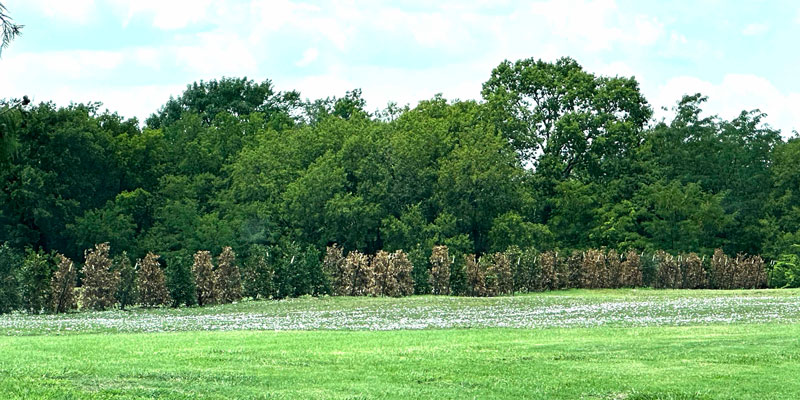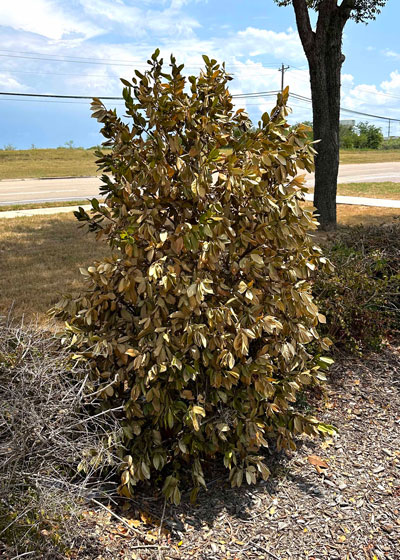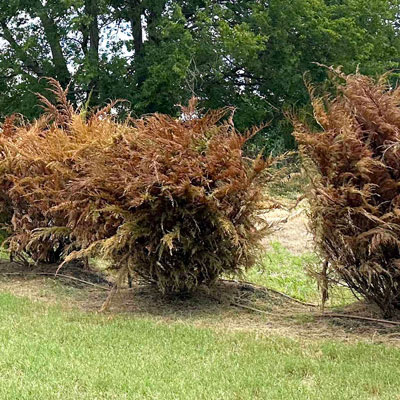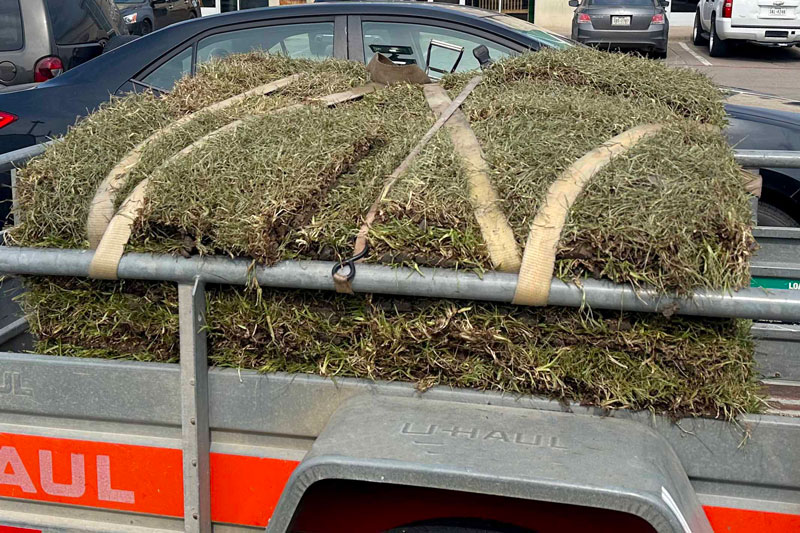Oh, for a little water!
As we were filling our car recently, I noticed a large landscape across the street that was probably going to lose every shrub that had been planted. Thousands of dollars’ worth lost, all for lack of strategically timed waterings.

Some plants don’t give much notice when they’re passing the point of no return during droughts, otherwise known as the “permanent wilting point.” Hollies don’t wilt. They lose their luster and they take on a dull tone that gives you a sick feeling to the pit of your stomach. You know you’ve blown it – that you’ve fallen asleep at the faucet. There is no coming back.

After decades of trying to tell people to build basins to hold water so they could irrigate their new shrubs every few days I finally gave up and came at it from a different direction.
I decided to quantify it. Simplify it:
• Match the pot size from which the plant was planted with a like amount of water.
• Give it that amount of water every other day all summer long. Use a garden hose and a bubbler or breaker.
• So, a 10-gallon plant would get 10 gallons of water; a 20-gallon plant would get 20 gallons, and so forth. I’m pretty sure you can handle the math from there.
• Mondays, Wednesdays, and Fridays. You can take Sundays off. Rainy days don’t count unless you get 4 inches or more.

This is about when most people start asking about drip irrigation. That’s when I want you to remember this photo. These would seem to be perfectly good drip irrigation lines, but the junipers have died in spite of them.
I don’t know if these specific lines were working, but I’d assume that they were. The problem was that they weren’t left running long enough to soak the plants to the bottoms of their original root balls. It probably would have taken 6 or 8 hours of running to deliver enough water. I see this all the time with drip irrigation systems.
(While I’m at it, those water bottles you strap around tree trunks are pretty much a waste of time and money, too. The roots that take up water aren’t by the trunks. They’re out at the trees’ drip lines.)

If you’re in the market for new turfgrass, the secret is to water it often and lightly for its first couple of weeks.
Meet the sod delivery truck at the turf yard first thing in the morning. Take the sod home directly. Cover it so its roots won’t dry out on the highway.
Have the ground prepared from the day before, and have your crew ready when you arrive. Lay the sod as soon as you get home. Snug the pieces together tightly, then have someone fill in the cracks with loose topsoil.
Water the new sod as soon as you finish each area. Water the entire yard when you’re done, then water for 5 to 10 minutes morning and evening for the first couple of weeks. Roll the lawn if needed to smooth things out.
Mow as soon as the grass reaches the recommended height and regularly thereafter. Letting the grass grow taller results in lanky, weak turf that invites weeds.
